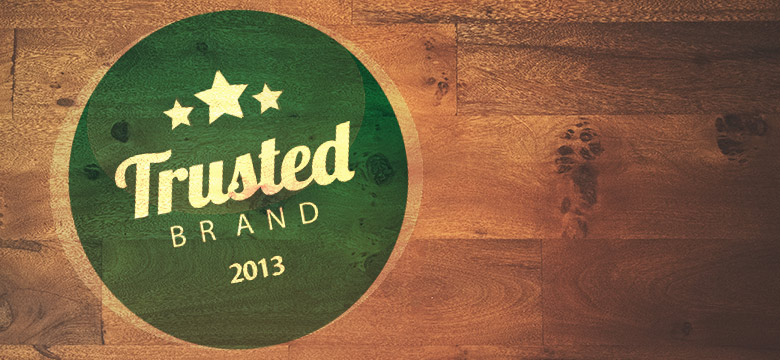
Most people consider trust something that must be earned. And, while a company has the ability to earn a customer’s trust over time through successful interactions, in most cases there is a “leap of faith” that occurs to begin the customer/company relationship. So, in essence, the trust comes first.
How do brands convince consumers to initiate a relationship? Some of the most successful brands use visual elements to encourage trust. They do this through maintaining aesthetics, focus, and consistency in crafting the images used to represent them.
1. Aesthetics
In a culture that is flooded with information, but short on time, we rely on aesthetics, the language of feeling, because it takes less time to
feel than it does to read wordy descriptions.
What do all of the big brands have in common? They all share a dedication to aesthetics. Brands like Apple, Starbucks, and Mini Cooper intentionally design everything from their retail stores to physical products to create an experience that evokes a specific feeling. Whether it’s fun innovation, classy comfort, or striking individuality, the elements of design all translate into positive feelings which inspire trust.
Sight and the Power of Contrast
Of all of our senses, sight is the one we rely on most. It’s easiest to gather data from quickly. Our visual system is hardwired to discern the things we see starting from the biggest differences to the smallest differences. Most quickly, we recognize what’s different- elements of contrast. Contrast is most easily achieved through use of color. Dark text and images are most easily seen on a bright, neon background. Contrast translates in our minds as “bold” and “interesting.” To us, the brand becomes charismatic character who knows who it is and it isn’t afraid to declare it. When a brand uses visual contrast, we tend to like it more. Psychology tells us that if we like something, we are more inclined to trust it.
2. Focus
The danger in branding is not too much focus, but too little. When a brand tries to be too many things, or provide too many services, it sends an unclear message to the consumer.
Brand differentiation and charisma require focus.
As we learned earlier, we like brands who know who they are and aren’t afraid to stand out. Part of what allows a brand to do that is focus. Too often, when the creative designers begin to create the image of a brand, they want an image that will speak to everyone. Instead of being all things, focus on being one or two things to the large audience who needs those one or two things.
Beauty in Simplicity
Keeping your brand’s design simple is one of the easiest ways to portray a clear, focused message. Clear messages are comprehended more quickly, and consumers will appreciate how little time it took to understand what your brand stands for. In the chaotic world of advertising, consumers value clarity and are more likely to trust a brand they can understand.
3. Consistency
It’s true that consumers like brands that are different, surprise them, and stand out, but at the root of all of this, there needs to be consistency.
Without consistency, there is little chance of brand recognition. If Target changed its colors to purple and yellow or, all of a sudden, introduced a new elephant mascot alongside Bullseye the dog, consumers would be confused. It would look like the brand is having an identity crisis, and consumers might think they don’t know who the brand is after all. This discourages trust.
However, subtle changes to keep a brand updated are often received positively by consumers. For example, Pepsi managed to keep its logo consistent through a series of small improvements over a period of time, changing its curvy, thin small caps text, to larger, smoother all caps. Though the red, white, and blue have traded places in the logo, they still remain Pepsi’s consistent colors.
Comfort in the Familiar
Elements of predictability make consumers feel safe. People take comfort in the familiar and some of the oldest, most successful brands capitalize on that. Consistency in design translates to consumers as something they can count on. That predictability will help you build brand recognition and trust.
Indeed there is a delicate balance that brands need to maintain at the intersection of predictability and spontaneity. The best way to learn how to achieve this balance is to study the brands who have mastered it.

